|
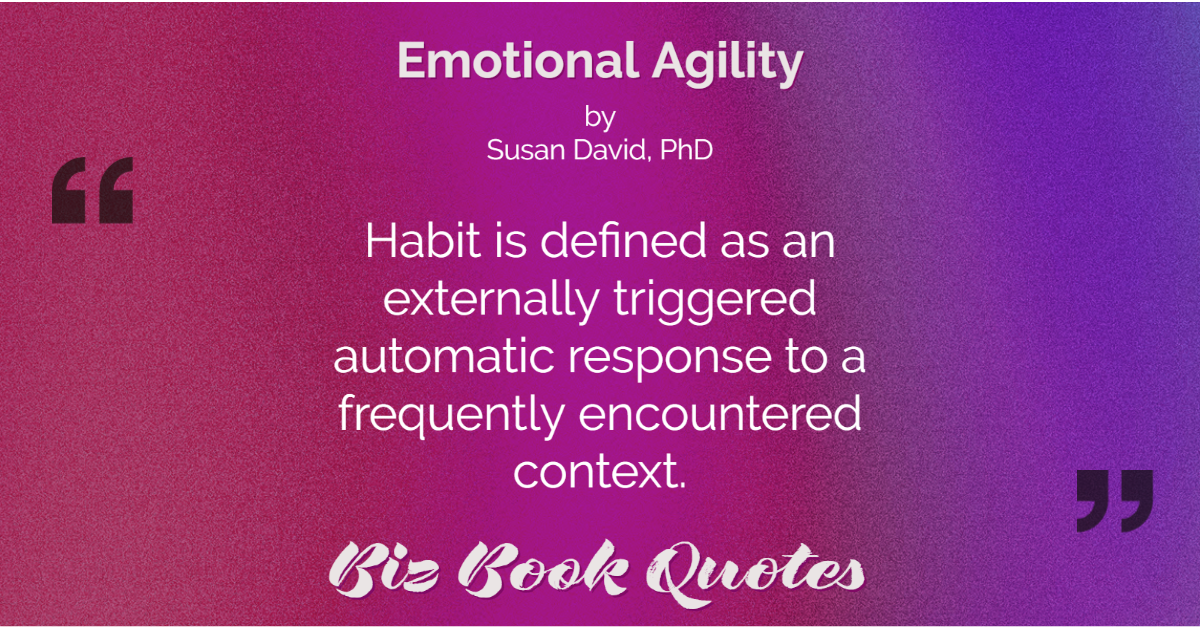
|
Emotional Agility:
Habit is defined as an externally triggered automatic response to a frequently encountered context.
|
154 |
|
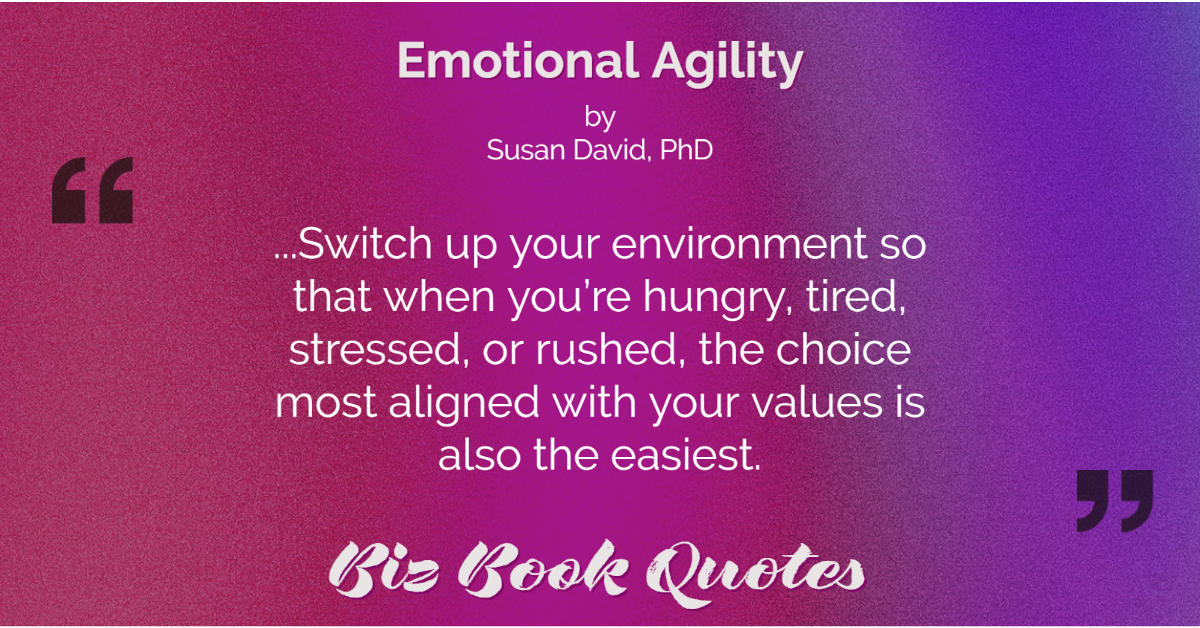
|
Emotional Agility:
…Switch up your environment so that when you’re hungry, tired, stressed, or rushed, the choice most aligned with your values is also the easiest.
|
157 |
|
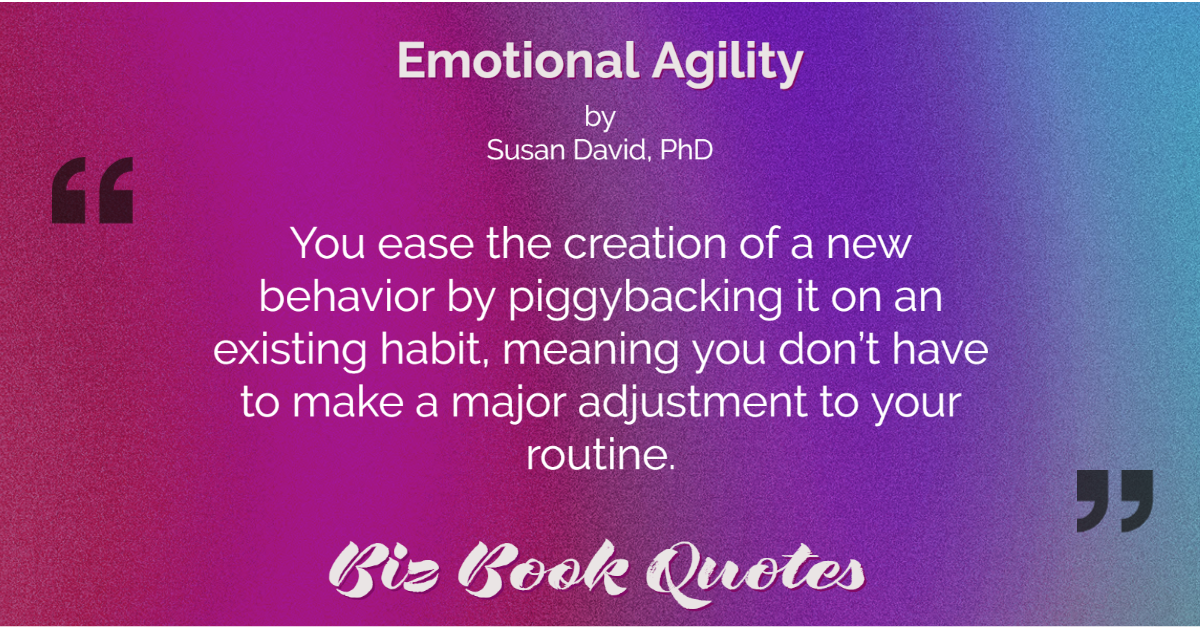
|
Emotional Agility:
You ease the creation of a new behavior by piggybacking it on an existing habit, meaning you don’t have to make a major adjustment to your routine.
|
158 |
|
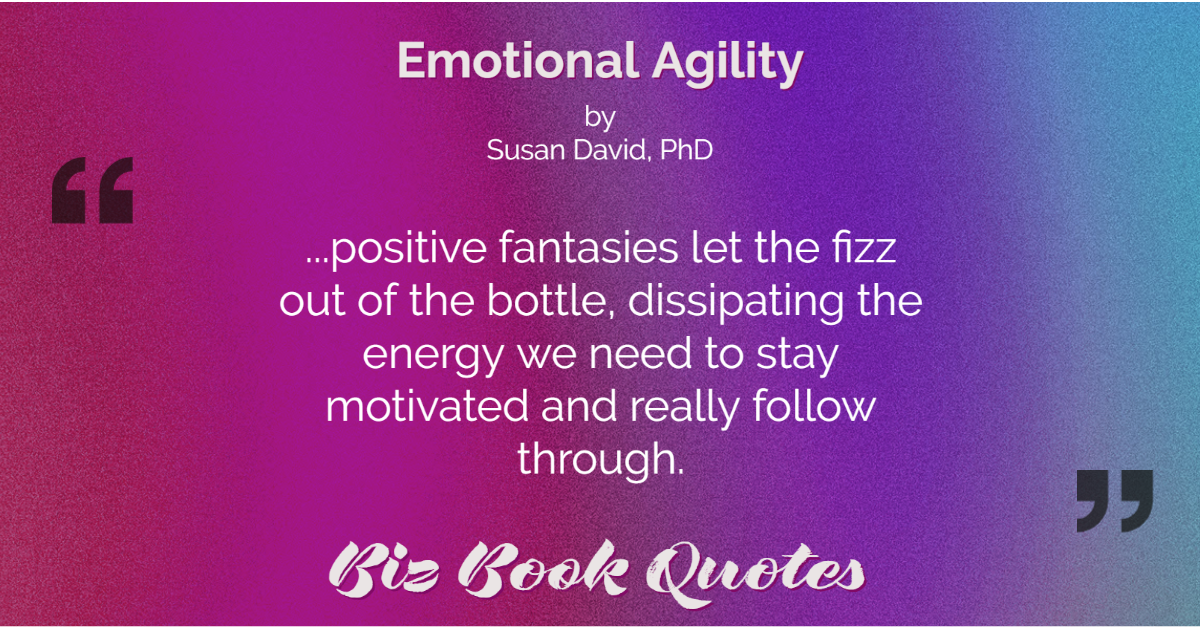
|
Emotional Agility:
…positive fantasies let the fizz out of the bottle, dissipating the energy we need to stay motivated and really follow through.
|
160 |
|
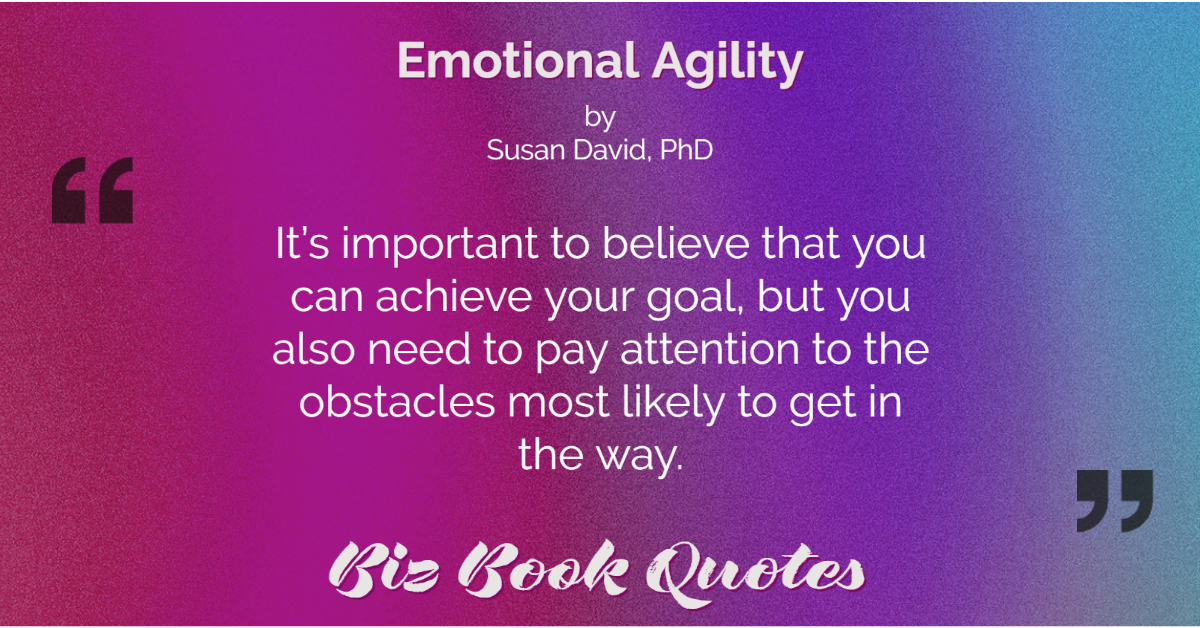
|
Emotional Agility:
It’s important to believe that you can achieve your goal, but you also need to pay attention to the obstacles most likely to get in the way.
|
160 |
|
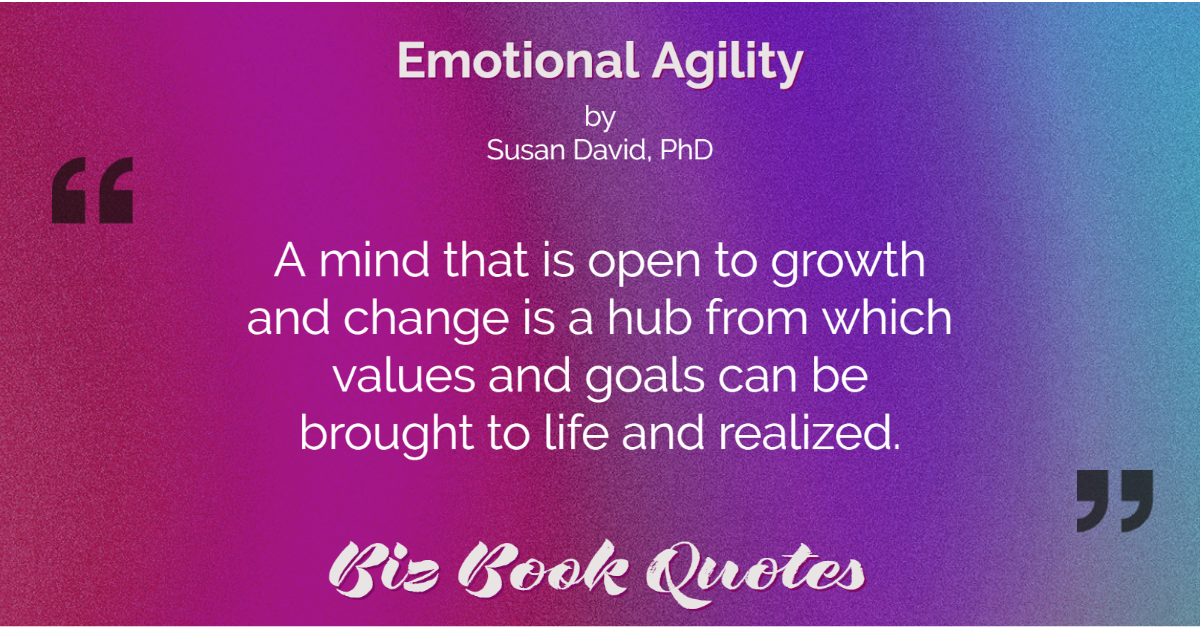
|
Emotional Agility:
A mind that is open to growth and change is a hub from which values and goals can be brought to life and realized.
|
161 |
|
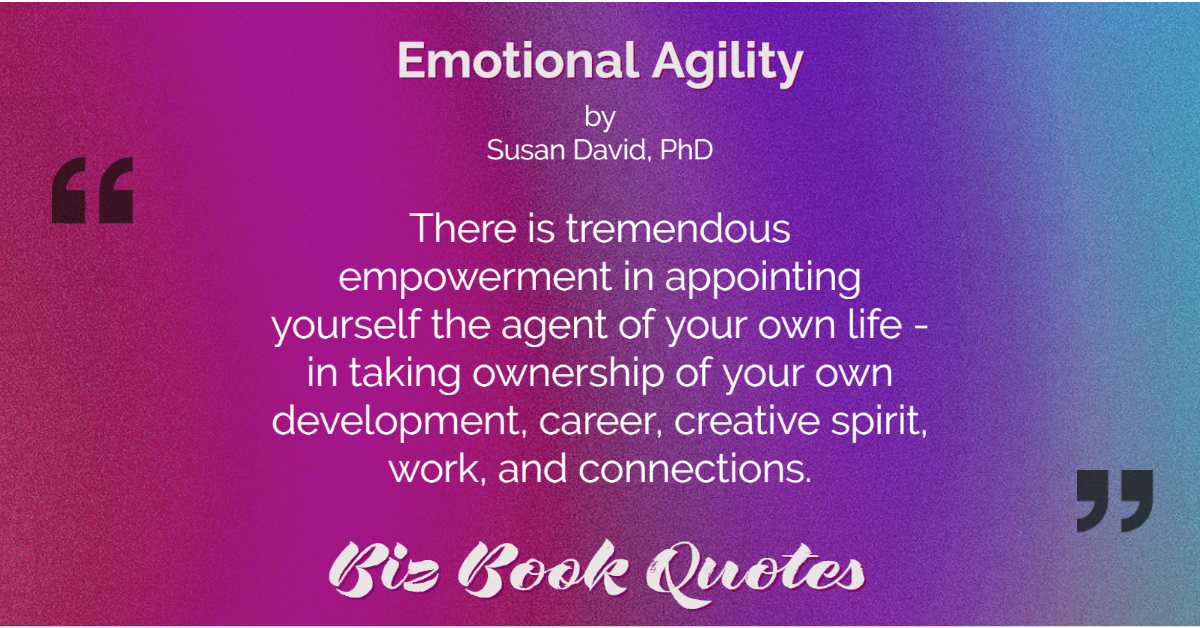
|
Emotional Agility:
There is tremendous empowerment in appointing yourself the agent of your own life – in taking ownership of your own development, career, creative spirit, work, and connections.
|
161 |
|
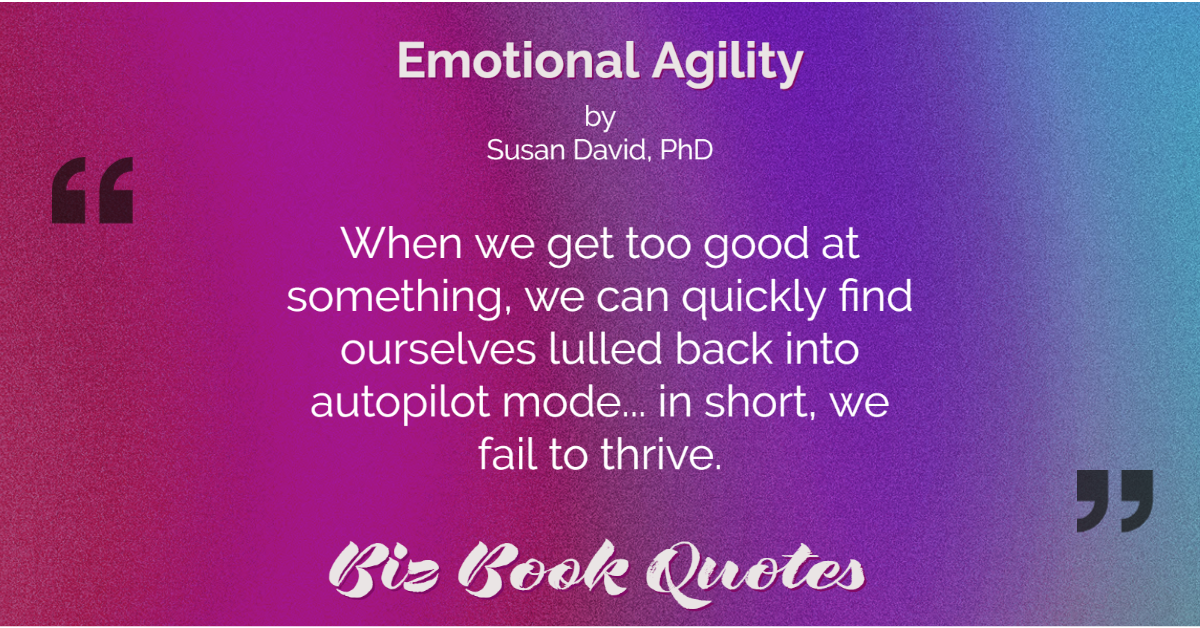
|
Emotional Agility:
When we get too good at something, we can quickly find ourselves lulled back into autopilot mode… in short, we fail to thrive.
|
164 |
|
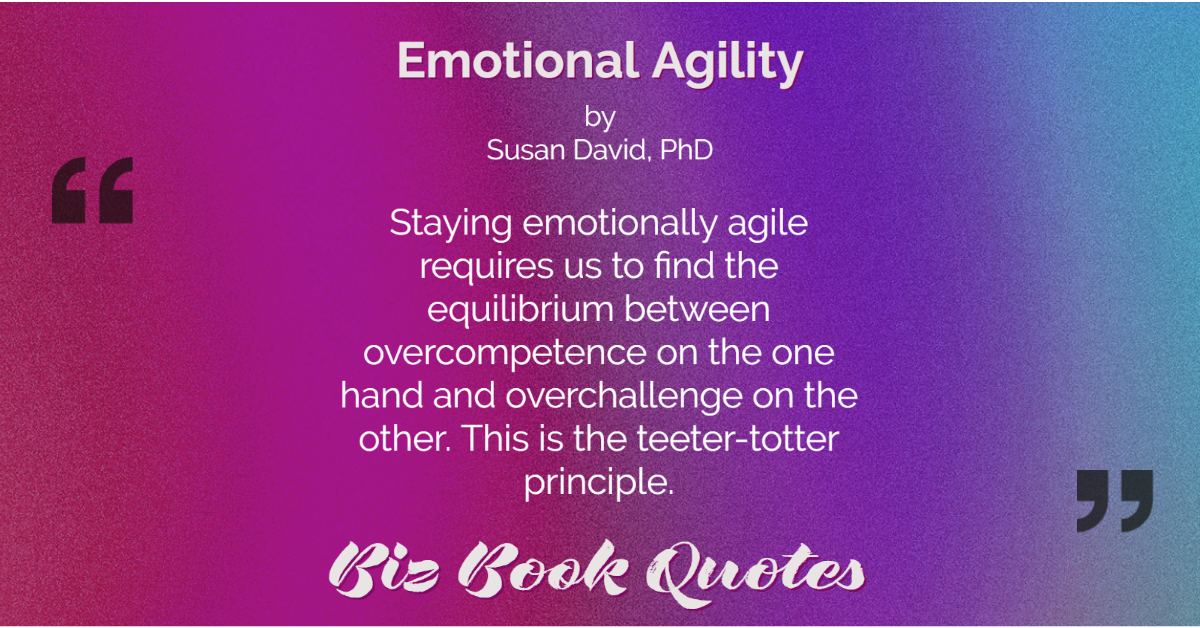
|
Emotional Agility:
Staying emotionally agile requires us to find the equilibrium between overcompetence on the one hand and overchallenge on the other. This is the teeter-totter principle.
|
165 |
|
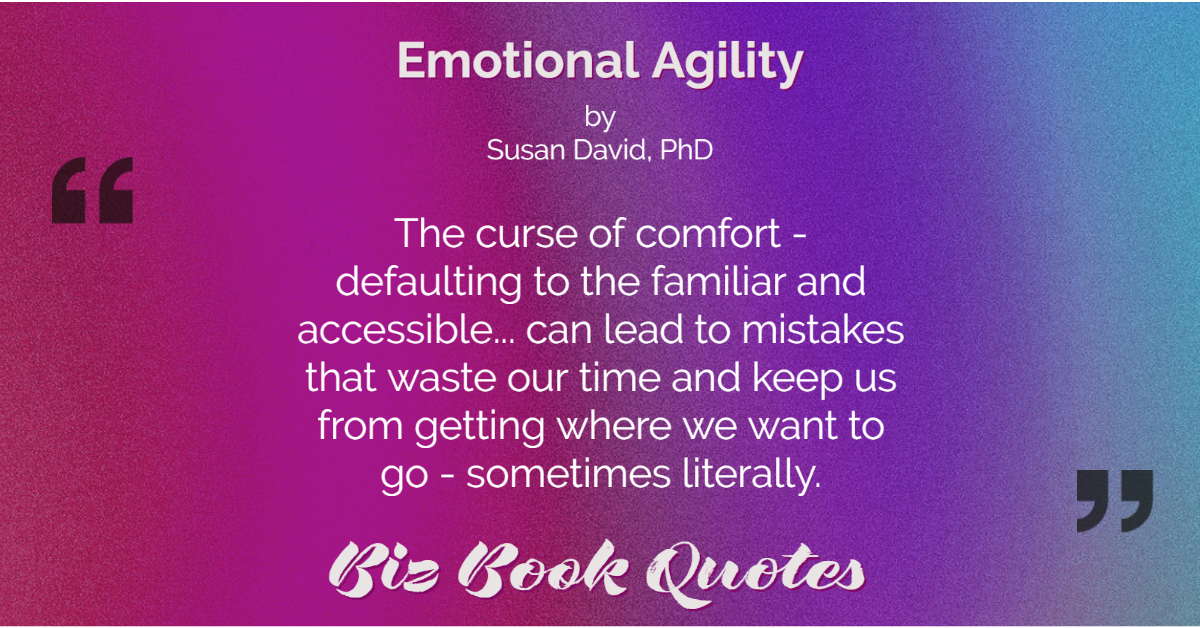
|
Emotional Agility:
The curse of comfort – defaulting to the familiar and accessible… can lead to mistakes that waste our time and keep us from getting where we want to go – sometimes literally.
|
168 |











